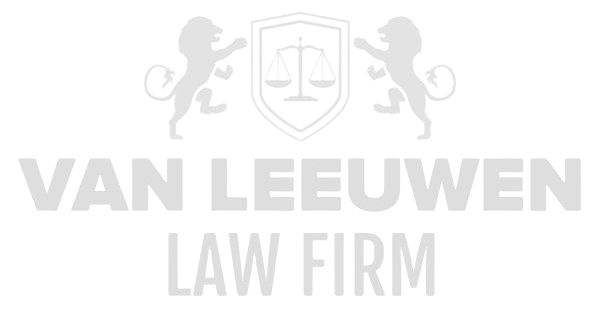In the complex world of financial-economic law, where legal, economic, and societal interests converge intensely, trust forms the unshakable foundation upon which genuine transformation can be built. Without a robust basis of trust, any attempt at reform or recovery is doomed to fail from the outset. Trust transcends the mere legal dimension and serves as the cornerstone of institutional legitimacy, operational continuity, and reputation management. When this trust falters—whether due to allegations of financial-economic crimes—legal risks arise, but also the social and managerial fabric of an organization is fundamentally undermined. Such accusations, whether stemming from criminal investigations, administrative supervisory measures, or media coverage, can lead to an institutional crisis affecting all levels of an enterprise or government agency: from the board of directors down to the lowest operational processes, from the balance sheet to the public image.
Where public opinion, supervisory authorities, and judicial bodies function as a triad in their pursuit of transparency and justice, the accused often becomes the target of collective indignation even before any legal assessment has taken place. This phenomenon—characterized by the now structural tendency of ‘trial by media’—creates an almost irreversible dynamic in which reputation loss and legal damage escalate exponentially. In this power field, where complexity and norm erosion go hand in hand, merely reactive measures are insufficient. On the contrary: only a strategic, thorough, legally sound, and morally integral approach enables the accused to regain moral and legal authority. Every legal and organizational action must be based not only on law and jurisprudence but above all on a renewed appeal to societal trust—an appeal conveyed through transparency, robust legal defense, and a principled approach to integrity.
The Disruptive Impact of Allegations in the Financial-Economic Domain
When a company, its executives, or supervisors face allegations of financial-economic crime, the disruption that follows is fundamental in nature. The effect is disruptive, far-reaching, and all-encompassing—not only in the legal sphere but equally in governance, compliance, and external relations. These allegations trigger an institutional shockwave that severely disrupts normal business operations. Operational processes come under pressure, collaborations are reconsidered or suspended, and internal decision-making structures become paralyzed. In the eyes of stakeholders—shareholders, regulators, contractual partners, and the public—the company ceases to be an autonomous actor but becomes an entity under suspicion, whose actions are scrutinized and must be constantly accounted for.
Moreover, allegations of financial-economic misconduct create a domino effect extending beyond the organization’s borders. The vulnerability of the system in which this organization operates—be it the banking sector, public services, or an international trade framework—is exposed and amplified. Contractual relationships become unsettled, creditworthiness declines, stock prices become volatile, and suppliers and customers distance themselves. The legal process functions in this context as a catalyst for uncertainty: every procedural act, press release, preliminary ruling, or interim decision has direct economic and social impact. Legal complexity intertwines with economic panic and public judgment, transforming the original legal conflict into an integrated systemic crisis.
At the same time, the psychological effect within the organization should not be underestimated. Employees experience uncertainty about their positions, fear for their futures, and question the integrity of their leaders. The moral cohesion within the organization is severely tested. Loyalty, previously taken for granted, gives way to fear, self-preservation, and sometimes even betrayal. In such a climate, recovery—and let alone transformation—is impossible without first restoring the conditions for trust. This lies at the heart of every legal strategy: restoring trust through legal, communicative, and organizational integrity.
The Impact on the Governance Responsibility and Reputation of Executives
For executives and supervisors, confronting financial-economic suspicion is an existential ordeal. Not only is their formal responsibility questioned, but also their personal integrity and moral compass are openly doubted. In a world where the line between professional conduct and personal morality is increasingly blurred, it is no longer sufficient to point to formal powers or delegated responsibilities. Society demands transparency, accountability, and above all: responsibility. This means that every executive under suspicion must not only defend themselves legally but also publicly explain, contextualize, and convince.
The damage to the reputation of leaders is usually not temporary but structural. A suspicion—even without conviction—takes root in collective memory and becomes the reference point for future assessments. The stigma of alleged involvement in financial-economic crime is tenacious, persistent, and destructive. It undermines credibility, limits future career prospects, and stains all forms of institutional legitimacy. Regardless of the legal outcome, leaders are often portrayed in public debate as symbols of failed supervision, abuse of power, or moral erosion. The legal process thus becomes a forum of public morality, where the principles of the rule of law come under pressure from the demand for scapegoats, atonement, and exemplary punishment.
Once executives come under the scrutiny of justice or regulators, a near-permanent state of supervision, control, and reporting arises. Every statement, decision, and external signal is interpreted as evidence of guilt, denial, or incompetence. In this context, legal defense becomes more than a defense strategy: it becomes a form of existential positioning. A carefully constructed defense, legally substantiated and strategically positioned in the public domain, is essential to liberate executives and supervisors from this chokehold of public indignation and institutional paralysis.
The Role of Media and Public Opinion in the Escalation Process
The media act in this context as a catalyst for indignation, accelerator of judgment, and obstacle to legal thoroughness. In today’s media landscape, where speed and spectacle prevail over nuance and factual accuracy, the accusation itself is enough to destroy reputations. Media attention generates social pressure, fuels political responses, and places legal processes under strain. A single leak, a suggestive headline, an incomplete quote—these suffice to trigger an institutional chain reaction that is hardly controllable.
Once public opinion is set in motion, it rarely follows the path of legal nuance or objective assessment. It demands perpetrators, victims, motives, and atonement. In this dramaturgical logic of public debate, there is little room for doubt, counterevidence, or procedural justice. The rule of law is put under pressure—not by formal legal changes, but by the erosion of its foundations through public image formation. In this sense, the media discourse forms a quasi-legal arena where parallel judgments are rendered, and the outcome of the formal legal process is often experienced as afterthought.
It is in this context that the legal strategy of the accused party must include a communicative component aimed at regaining control over the public narrative. This requires no populist counterattack or gratuitous denial, but a carefully constructed narrative in which factual accuracy, legal consistency, and moral positioning come together. Only through this triad can it be prevented that the media dictate the course of the legal process, rather than the other way around. Legal assistance must therefore be not only analytically and procedurally sharp but also discursively strategic and narratively thoughtful.
Regaining Trust as a Prerequisite for Sustainable Transformation
Without restoring trust, no form of transformation is conceivable. While the legal process is primarily aimed at establishing facts and legal consequences, in reality it also functions as a ritual of purification, repositioning, and institutional restart. This process demands more than mere acquittal or dismissal; it requires the explicit reconstruction of moral legitimacy, operational reliability, and strategic trust. This trust must be built on three levels: internal, external, and systemic.
Internal trust concerns the belief of employees, internal stakeholders, and leadership in the fairness and resilience of their own organization. It requires transparency, participation, and emotional intelligence to restore this trust. External trust concerns the perception of investors, regulators, business partners, and public opinion. Here, legal argumentation, strategic communication, and independent verification are essential. Finally, systemic trust concerns confidence in the legal order itself—in the legal system’s ability to judge without bias, without external pressure, and with regard for the integrity of all parties involved.
When these three levels of trust are reconnected, space is created for genuine transformation: a reorientation of strategy, culture, and responsibility based on lessons learned and strengthened foundations. Not as a form of window dressing or damage control, but as an expression of structural reform and moral reflection. The legal process then functions as a facilitator of this metamorphosis—provided it is conducted with intellectual rigor, principled determination, and a deep awareness of the social responsibility that accompanies legal power.
Systemic Implications for National and International Corporations
When national or international corporations are accused of financial-economic crimes, the impact far exceeds the boundaries of the incident itself. Such cases rarely represent isolated events; rather, they function as symptoms of deeply rooted systemic weaknesses. These accusations painfully expose deficiencies in governance structures, internal control mechanisms, and ethical leadership. Internationally operating companies find themselves within a complex matrix of legal, cultural, and economic expectations, where failing to meet even minimum compliance requirements is viewed as institutional disloyalty to the values of transparency and legality. The consequences are far-reaching and profound, striking at the very core of the company’s raison d’être.
These systemic effects manifest not only in legal liability but also in geopolitical and economic consequences. For multinationals, suspicion often means loss of markets, suspension of strategic partnerships, and in some cases even sanctions or exclusion from international tenders. Financial institutions come under increased supervision, risk assessments are revised, and international creditworthiness is put under pressure. The legal conflict thus leads to a rupture with the economic infrastructure within which the corporation operates. It is no exaggeration to say that a single accusation can undermine decades of economic development, with all the ensuing consequences for shareholders, employees, and national economies.
Moreover, it is insufficient to merely point to ‘bad apples’ or individual excesses within the organization. The legal reality no longer accepts such simplifications. Instead, attention is given to patterns, structural deficiencies, and the institutional context that allowed behaviors to occur. The corporation as a legal entity bears not only liability but also moral responsibility. This shift has profound implications for the governance model of international corporations: it is no longer enough to hide behind rules; the expectation is that they act proactively, integrally, and principledly, demonstrating structural respect for the rule of law.
The Role of Supervisory and Judicial Authorities as Accelerating Forces
In today’s era, where transparency is demanded and normative conduct is no longer optional, supervisory bodies and judicial institutions play a central role as accelerating forces in processes of accountability and correction. These entities no longer operate as cautious or passive bodies but act with a combination of independent authority, public legitimacy, and legal decisiveness. They serve as mirrors of institutional integrity but also as executioners of failing governance. A single indication or sanction from a supervisory authority can trigger a cascade of consequences: internal investigations, external audits, criminal prosecutions, and civil claims, all links in a chain of integrity restoration.
The tools available to these supervisory bodies are powerful, versatile, and increasingly digitized. These include imposing administrative fines, revoking licenses, appointing silent curators, or enforcing enhanced supervision. Judicial authorities further have investigative powers that profoundly impact privacy and operational freedom of the company: searches, seizures, witness hearings, arrests—all instruments that can erode or even destroy the institutional memory of the company. In this context, a legally well-prepared and strategically positioned defense is not a luxury but a necessity to maintain the balance of the rule of law.
It must also be noted that supervisors and the judiciary do not operate in a vacuum. They are subject to societal, political, and international pressure to act decisively. International treaties, FATF compliance obligations, and European legislation compel national authorities to undertake cross-border interventions. Corporations thus face multiple layers of enforcement: local, national, and international, where the absence of a uniform legal basis is often compensated by an abundance of jurisdictional claims. The legal playing field thereby becomes not only more complex but also potentially less just. Only a resolute, legally substantiated, and process-conscious defense can effectively counteract this.
Legal Defense as the Foundation of Human Dignity and Institutional Rehabilitation
At the heart of every accusation lies an existential question: has the accused at any point undermined the foundation of the rule of law? This question is not merely legal but strikes at the human dignity of those involved. Legal defense must therefore serve not only as a means of self-protection but as a moral repositioning within the legal order. The defense positions itself as the guardian of human scale within a system increasingly inclined toward instrumentalism and repression. In this view, the defense is not the adversary of justice but its necessary counterforce, preventing the legal order from descending into punitive populism and arbitrariness.
A sound legal defense must therefore be not only procedurally airtight but also intellectually profound, ethically responsible, and discursively strategic. It requires a thorough analysis of the factual complex, a meticulous reconstruction of the chronology of events, a testing against both national and international law, and above all: an integrated approach that does not shy away from the ethical component of the dispute. Any legal defense ignoring these dimensions loses legitimacy and risks devolving into technical incantations that leave the moral core of the problem unaddressed.
For this reason, legal defense must also focus on institutional rehabilitation. It is not merely about acquittal or dismissal but about explicitly restoring justice, affirming integrity, and repairing reputation. This requires a proactive stance aimed at transparency, reflection, and the implementation of structural reforms. The defense must lead in this: not as an obstacle to justice but as a pathfinder of a new institutional balance, founded on principles of fair trial, human dignity, and regained trust.
International Cooperation and Cross-Border Legal Complexity
In a globalized world where capital, data, and decision-making transcend national borders, legal enforcement has necessarily become cross-border as well. Corporations frequently face legal proceedings in multiple jurisdictions simultaneously, each with its own rules, culture, expectations, and evidentiary standards. These simultaneous multi-jurisdictional proceedings make legal defense an extremely delicate operation, requiring consistency, coordination, and legal engineering at the highest level. The threat is not only multiple but diffuse, spread across jurisdictions, cultures, and legal systems, with the consequence that even a partial misstep in one country can have repercussions in proceedings elsewhere.
Moreover, international cooperation between supervisors, public prosecutors, and intelligence structures is becoming increasingly intensive. Memoranda of Understanding, international treaties, joint task forces, and data exchange ensure that information circulates rapidly and that national procedures are fed by cross-border dossiers. The corporation’s legal position weakens when it underestimates this dynamic or is inadequately legally supported. The absence of strategically coordinated defense teams leads to inconsistencies in litigation, unintended confessions, or contradictory statements, subsequently exploited as evidence by foreign authorities.
An effective defense in a cross-border context therefore requires an international-caliber legal architecture. Lawyers, tax specialists, compliance experts, and communication professionals must operate within a coordinated framework, where every action, defense, and statement is embedded in an internationally strategic legal plan. This approach prevents reputational damage, legal inconsistencies, and organizational decay, enabling the corporation to tell its own story before others fill in the gaps.
Prevention as the Highest Form of Legal Control
Although legal defense is central to preserving the rule of law, the highest form of legal control lies in prevention. Preventing legal conflicts, timely signaling of risks, and establishing structures that systematically exclude deviant behavior form the true litmus test of legal maturity. Prevention is not a side issue of compliance but the heart of good governance. Corporations that understand this invest not only in legal departments but also in a culture of vigilance, ethics, and responsibility.
Prevention means embedding legal principles in the structure and culture of the organization. This demands continuous education, assessment, and reflection. It requires leaders to be aware of their legal position, to understand how decisions can be legally interpreted, and to realize that ethical conduct is not optional but a legal imperative. In this regard, the lawyer functions not only as a litigator but as a strategic partner in designing a robust, future-oriented organization.
Ultimately, the ability to enable transformation is inseparably linked to the ability to legally, morally, and strategically anticipate potential crises. Only a corporation that knows its vulnerabilities and actively addresses them can rightfully claim trust—the sole foundation on which sustainable legitimacy, the integrity of the rule of law, and institutional continuity can truly rest.
Legal Remedies as Instruments of Rule-of-Law Reintegration
The legal remedies applicable within the context of financial-economic criminal cases transcend the classical boundaries of criminal procedure and encompass a wide range of rule-of-law instruments aimed at reintegration within the legitimate domain of society. These remedies function as both symbolic and practical corrective mechanisms, intended to do justice to the past, regulate the present, and legally recalibrate the future. They represent a balance between punishment and restoration, between sanctioning and reintegration, reaffirming the fundamental principles of the rule of law and reintroducing them into the institutional functioning of the involved enterprise.
One of the key aspects of these legal remedies is their preventive and disciplinary character. They are not only intended to compensate damage or correct violations but also aim to reintroduce a sense of normativity into structures where such norms have been eroded. Examples include remediation agreements, compliance monitoring under judicial supervision, or court-imposed structural changes within the governance of a company. In each of these cases, the legal instrument is not an end in itself but a step towards institutional and moral recovery. The company is not merely corrected but repositioned within the order of the legal community.
It must also be recognized that these legal remedies often result in a shift of the power balance within the company. Legal remediation frequently implies managerial redesign: the phasing out of individuals responsible for mismanagement, the introduction of supervisory structures, the implementation of internal control mechanisms, and the institutionalization of transparent decision-making. The company is thereby not only subjected to sanction but undergoes an actual legal reconfiguration that redefines and regulates its place within society. This reconfiguration, if carefully legally guided, offers the company not only a second chance but also a structural strengthening of its legitimacy.
Managerial Liability and the Legalization of Corporate Governance
The accusation of financial-economic crime extends beyond the entity itself; it increasingly targets the natural persons who exercise managerial power. Directors and supervisors are held personally accountable for failures in supervision, knowingly ignoring warnings, or creating circumstances that enabled unlawful behavior. This shift of liability from the entity to the individual has profound implications for how corporate governance is shaped. In light of legal risks, managing an organization is no longer a purely economic or strategic activity but first and foremost a legal act.
Managerial liability implies that every decision—or omission—must be assessed under legal standards. This legalization demands a drastic revision of governance practices, where documentation, transparency, accountability, and ex ante legal analysis are no longer luxuries but prerequisites for the legitimacy of actions. The twenty-first-century director is therefore primarily a legal actor: responsible for operationalizing legal principles in an economic context, constantly balancing profitability and legality.
At the same time, it should not be overlooked that the personal impact of criminal or civil prosecution on a director is existential. Damage to reputation, threats of professional disqualification, seizure of personal assets, and the psychological toll of lengthy legal proceedings affect not only professional existence but also the individual at their social and moral core. In this context, legal defense also becomes an act of human preservation: an attempt to maintain dignity, legitimacy, and social standing against a public opinion often prone to premature judgment.
The Strategic Narrative as a Weapon in the Arena of Public Perception
In the era of instant information dissemination via digital media, the legal file is no longer the exclusive domain of the judiciary. Public opinion forms an equally powerful arena in which the reputation of a company, director, or public institution is shaped, damaged, or—exceptionally—restored. In this media landscape, the absence of a strategic narrative is synonymous with surrender. Those who fail to tell their story leave it to be told by others: journalists, prosecutors, anonymous sources, or vested competitors. The legal conflict thus becomes a discursive struggle: a battle for meaning, interpretation, and legitimacy.
A strategic narrative serves as the communicative extension of legal defense. It is a carefully constructed storyline that legally anchors facts, morally legitimizes, and strategically positions the case. This narrative acknowledges the gravity of the situation but also provides a framework for understanding, reflection, and restoration. It distinguishes between fact and insinuation, between error and intent, between incident and pattern. Through interviews, press releases, position papers, and public statements, it creates a space where nuance is possible—and within which the legal process is relieved from public prejudices.
Constructing such a narrative requires more than mere communication skills; it demands legal precision, moral insight, and strategic awareness. Every word counts, every silence speaks volumes, every tonal shift can mean the difference between public support and social exclusion. In this field of power, the strategic narrative acts as a defensive line for the moral identity of the accused: it is not a denial of responsibility but an attempt to restore truth, integrity, and ultimately trust.
Integral Compliance as a Structural Guarantee for Legal Resilience
In the aftermath of legal proceedings related to financial-economic crime, implementing a robust and future-proof compliance program is not a voluntary recommendation but a legal and moral imperative. Such a compliance architecture serves not only as a shield against future risks but also as proof of goodwill, reflection, and readiness for restoration. In the context of legal repositioning, compliance is not a formality but an integral part of the institutional DNA, demonstrating the willingness to do justice and continue doing so.
An effective compliance program involves far more than drafting codes of conduct or establishing reporting points. It requires a multidisciplinary approach where legal analysis, behavioral psychology, data analytics, and governance converge into a coherent system of detection, prevention, intervention, and sanctioning. Crucially, this system must not only function as a legal safety net but as a dynamic control mechanism continuously adapted to new risks, changing regulations, and societal expectations. In short, the compliance program must live, evolve, and remain in constant dialogue with the reality in which the company operates.
Finally, the value of compliance also lies in its symbolic function. It demonstrates that the company no longer places itself above the law but voluntarily submits to scrutiny, regulation, and evaluation. Compliance thus becomes a sign of responsibility, institutional maturity, and rule-of-law integration. In the post-litigation phase, it serves as an anchor for rebuilding, a foundation for trust, and a promise to shareholders, employees, and society that failure is no longer an option and that lawfulness is henceforth decisive for every decision, at every level.
Concluding Reflection: The Restoration of Trust as the Highest Legal Ambition
Legal defense against accusations of financial-economic crime is much more than a technical fight over evidence and procedure. It is an existential struggle for trust: trust of the judge, the regulator, the shareholder, the market, and society. In this struggle, the legal argument is only one component; the narrative, compliance, human dignity, and institutional self-reflection are equally decisive for the ultimate judgment passed on the company—both formally and informally.
Trust cannot be demanded; it must be earned—and regained. It requires transparency, sincerity, legal decisiveness, and institutional humility. Only those willing to deeply and structurally reflect on their own functioning, errors, and shortcomings can rightfully claim rehabilitation. The rule of law provides all the instruments—but it is up to the accused party to employ these instruments in service of a higher goal: affirming the legal order as the framework for human conduct, also—and precisely—in times of crisis.
The ultimate ambition of every legal intervention in the context of financial-economic crime must therefore be: the sustainable restoration of trust. For without trust, there is no legitimacy. And without legitimacy, there is no future—neither for the company, nor for its directors, nor for the rule of law itself.








